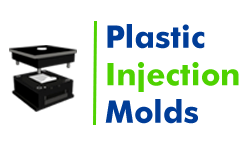- Mould Manufacturer
- Tooling
- Moulding Die
- Plastic Molding
- Plastic Injection Molding
- Injection Molding
- Nylon Injection Molding
- Injection Moulding
- Custom Injection Molding
- Injection Mould
- Injection Mouldings Process Manufacturers
- Medical Injection Molding
- Polycarbonate Injection Moulding
- Rapid Injection Moulding
- Injection Molds
- Injection Molding Cost
- Injection Molding Suppliers
- Injection Moldings
- HDPE Molding
- Metal Injection Molding
- Rubber Injection Molding
- Mold Designing
- Prototyping
- Automotive Injection Molding
- Blow Molding
- 3D Printing
4 Challenges of additive manufacturing 3d printing technology and How to Overcome Them
Automation and digitalization are the two foundation pillars of every industry in the present scenario. The expansion of the global 3D printing market is the ideal instance to show how the industrialists are integrating additive manufacturing 3d printing technology to boost production.
Challenges in additive printing
Although the technology of 3D printing has definitely added to the benefits list of the manufacturers, it has many challenges too. You get the freedom of designing, and the ease of prototyping is unparalleled. Still, some challenges remain, and you need to overcome them using the rapid additive manufacturing technology itself as the weapon.
1. Lack of standardization
3D printing has helped engineers to produce bulk items inexpensively. But sometimes, there may arise a situation where you may have to compromise with the quality. If you are ready to spend thousands of dollars buying the machine of additive printing, you can definitely get the best quality product. But trying to save money while buying the machine can be a risk that you cannot afford to take when it comes to saving market reputation.
2. Impact of additive printing on the environment
Plastic filament is the chief material that you have to use in 3D printers. Of course, the plastic is of high quality and relatively inexpensive. But the byproduct will ultimately end up in the landfills. It will be a direct contradiction to the environment preservation systems to reduce the accumulation of plastic.
That is why modern 3d printing and additive manufacturing machines are coming up with alternative ideas that won't add to the pollution of natural resources. You will be surprised to find the exhaust ventilation systems and the filtration accessories in the modern 3D printers to avoid the adverse health effects of the harmful nanosized particles that emit from the machines.
3. Knowledge gap
Many industrialists still do not possess a clear idea about 3d additive manufacturing. It is just a better version of the 3D printing technology that can aid in manufacturing businesses. Ensure that the employees receive proper training so that they are not clueless about what they are handling.
In order to make additive 3d printing a common method, it is the responsibility of every manufacturing company to invest time and money to train the employees and recruit experienced engineers as well. It is obviously challenging but equally rewarding.
4. Understanding of cost-effectivity of rapid additive manufacturing
Many of you out there might think that the process of 3d printing additive manufacturing rapid prototyping is a completely inexpensive way to produce the goods. But the thought process is partially wrong as you need to invest a considerable amount in the beginning to buy the appropriate tools and equipment. Only then can you reap the benefits of the process.
FAQ
- Q1. Why Is 3D Printing Called Additive?
Because 3D printing builds objects layer by layer by adding material, it is also known as additive printing. 3D printing is an additive manufacturing process since it constructs the product from scratch, as opposed to subtractive manufacturing techniques that entail removing material from a solid block. This makes it possible to precisely design complex shapes.
- Q2. How Does Additive 3D Printing Work?
Using layers of material, such metal or plastic, additive 3D printing produces an object based on a computer design. Layer by layer, the printer deposits material as directed by the design file, completing the product. Efficient production of intricate and accurate shapes is possible using this technique.
- Q3. Why Is Additive Manufacturing Used?
Additive manufacturing is employed because it has a number of benefits over traditional manufacturing processes, including the capacity to generate complicated shapes, decreased material waste, customisation, and quick prototyping. In addition, it allows for decentralized manufacturing and on-demand production, which makes it appropriate for a range of sectors, including healthcare, automotive, and aerospace.







.webp)

